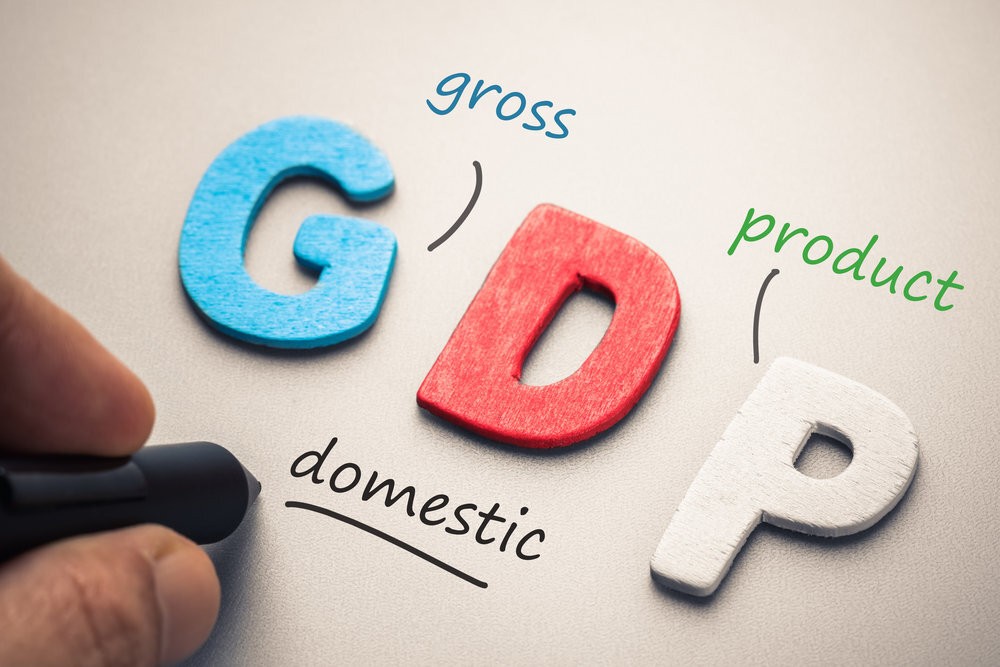Gross Domestic Product (GDP) is one of the most crucial indicators in the world of economics, representing the total value of goods and services produced in a country over a specific period. While it may seem like a dry statistic, GDP data carries immense significance for investors, as it offers insights into the overall health of an economy. For investors aiming to make informed decisions, understanding how to interpret GDP data and what it implies for their portfolios is essential. This article will guide you through the fundamentals of GDP, explain its implications for investors, and provide practical tips for using GDP data to enhance your investment strategy.
What Is GDP and Why Does It Matter?
Gross Domestic Product (GDP) measures the economic activity within a country’s borders, encompassing all goods and services produced over a given period, usually a quarter or a year. It serves as a barometer of economic health, indicating whether an economy is expanding or contracting. A growing GDP reflects a thriving economy, while a shrinking GDP may signal an economic downturn.
For investors, understanding GDP is more than just knowing the numbers; it’s about interpreting the broader economic trends and market conditions that can impact investment returns. Since GDP data can influence interest rates, stock prices, and corporate profits, it is a critical factor in assessing potential investment risks and rewards.
Breaking Down the Components of GDP
GDP is composed of four main components, each reflecting a different aspect of the economy:
- Consumer Spending (C): This is the largest component of GDP, accounting for household expenditures on goods and services. When consumer spending is strong, it usually indicates economic growth, benefiting businesses and, consequently, the stock market.
- Investment (I): Refers to business expenditures on capital goods and residential construction. High levels of investment can indicate business confidence in the economy, which can be a positive signal for investors.
- Government Spending (G): Includes public expenditures on goods and services. While it can stimulate economic growth, excessive government spending may also lead to higher debt levels, which could affect economic stability in the long run.
- Net Exports (X – M): The difference between a country’s exports (X) and imports (M). A positive net export figure contributes to GDP growth, while a trade deficit can detract from it.
Understanding these components helps investors gain a more nuanced view of where economic growth is coming from and how sustainable it may be.
How Is GDP Calculated?

There are three primary methods used to calculate GDP:
1. Production Approach
This method calculates GDP by adding up the value added at each stage of production for all goods and services within an economy. It captures the contribution of various sectors, such as manufacturing, services, and agriculture.
2. Income Approach
GDP can also be measured by summing all the incomes earned by individuals and businesses in the economy, including wages, profits, and taxes minus subsidies. This method highlights the flow of income generated from production activities.
3. Expenditure Approach
This is the most commonly used approach, which calculates GDP by adding up all expenditures on final goods and services within the economy (C + I + G + (X – M)). It reflects the demand side of the economy and provides insights into consumer behavior, business investments, and government activities.
What Do Different GDP Growth Rates Indicate?
Positive GDP Growth
When GDP is rising, it indicates that the economy is expanding. This generally suggests increased business activity, higher employment levels, and improved consumer confidence. Investors often view positive GDP growth as a signal to buy stocks, especially in sectors that are highly correlated with economic expansion, such as technology, consumer goods, and industrials.
Negative GDP Growth
A decline in GDP indicates economic contraction. If negative growth persists over two consecutive quarters, it is termed a recession. During a recession, businesses may experience lower revenues, leading to reduced profits and potential stock market declines. For investors, this is typically a time to be more cautious, focusing on defensive stocks or shifting investments into safe-haven assets like gold or government bonds.
Stagnant or Slowing GDP Growth
When GDP growth is slow or flat, it can indicate a period of economic uncertainty. Investors may find this challenging, as it could suggest an economy on the verge of a downturn or struggling to recover. In such scenarios, investors may prefer dividend-paying stocks or sectors less sensitive to economic cycles, such as utilities or healthcare.
Why GDP Data Impacts Stock Markets
GDP data directly influences the stock market because it reflects the broader economic environment in which companies operate. When GDP growth is strong, companies are likely to generate higher revenues and profits, which can drive up stock prices. On the other hand, when GDP contracts, businesses may struggle to maintain profitability, leading to lower stock valuations.
Moreover, GDP data can affect investor sentiment. If GDP reports show stronger-than-expected growth, it may boost investor confidence, leading to a market rally. Conversely, if GDP figures disappoint, it can trigger market sell-offs as investors become concerned about the economic outlook.
The Relationship Between GDP and Interest Rates
Central banks, such as the Federal Reserve, closely monitor GDP data when setting monetary policy. If GDP growth is robust, central banks may raise interest rates to prevent the economy from overheating, which can curb inflation. Higher interest rates make borrowing more expensive, potentially slowing down economic activity.
For investors, rising interest rates can be a double-edged sword. While it may indicate a strong economy, higher rates can also reduce the attractiveness of stocks, as the cost of borrowing increases for companies, potentially squeezing profit margins. Conversely, during periods of slow GDP growth, central banks may lower interest rates to stimulate the economy, which can be favorable for stock market performance.
Also Read: Keynesian Economics vs Monetarism: A Debate on Economic Policy
Using GDP Data to Make Investment Decisions
1. Sector Rotation Strategy
Investors can use GDP data to determine which sectors of the economy may perform well. For example, during periods of economic expansion, cyclical sectors like technology, industrials, and consumer discretionary typically perform well. In contrast, during economic downturns, defensive sectors such as utilities, healthcare, and consumer staples may be more attractive.
2. Evaluating International Investments
For investors with a global portfolio, understanding GDP trends in different countries can help identify promising markets. Countries with strong GDP growth may offer better investment opportunities compared to economies experiencing stagnation or recession.
3. Timing the Market
Although timing the market is notoriously difficult, GDP data can provide clues about economic cycles. For example, if GDP data suggests that an economy is approaching a recession, investors might consider reducing exposure to high-risk assets and increasing positions in safer investments.
The Limitations of Relying Solely on GDP Data
While GDP is a valuable indicator, it has its limitations:
- Doesn’t Reflect Income Distribution: GDP growth does not necessarily mean improved living standards for all citizens. It doesn’t account for income inequality, which can affect consumer spending patterns.
- Lagging Indicator: Since GDP data is released after the fact (quarterly or annually), it reflects past economic performance rather than current conditions. Investors should use GDP in conjunction with other leading indicators, such as stock market trends, consumer confidence, and business activity.
- Doesn’t Account for Informal Economy: GDP calculations often exclude the informal economy, which can be significant in some countries. This exclusion may lead to an incomplete picture of economic activity.
GDP Data and Its Influence on Commodities and Currencies
Commodities
Commodity prices often correlate with economic activity. For example, when GDP growth is strong, demand for industrial commodities like oil, copper, and steel tends to rise, driving up prices. Conversely, during economic downturns, demand for these commodities may fall, leading to price drops.
Currencies
GDP data can also influence a country’s currency value. A country with strong GDP growth is often seen as economically stable, attracting foreign investment, which can increase demand for its currency and lead to currency appreciation. On the other hand, weak GDP growth can cause currency depreciation as investors seek more stable investments elsewhere.
Practical Tips for Investors to Leverage GDP Data
- Stay Updated on GDP Reports: Follow the release schedule for GDP data, which is typically reported quarterly. Knowing when these reports come out can help you anticipate potential market movements.
- Use GDP in Conjunction with Other Indicators: Combine GDP data with other economic indicators like unemployment rates, inflation, and manufacturing output for a more comprehensive view of the economy.
- Consider Long-Term Trends: While short-term GDP fluctuations can impact markets, long-term trends are more significant for making sound investment decisions.
- Monitor Revisions in GDP Data: Initial GDP reports are often revised. Keep an eye on these revisions, as they can change the economic outlook and influence investment strategies.
Conclusion
Interpreting GDP data is essential for investors who want to understand the economic forces shaping the markets. By analyzing GDP trends, investors can gain valuable insights into the health of the economy, the potential direction of interest rates, and which sectors may offer the best opportunities. While GDP is a powerful tool, it should be used alongside other indicators to form a well-rounded investment strategy. By keeping an eye on GDP data, you can make more informed decisions, potentially boosting your returns and managing risks more effectively.
Investing is not just about following numbers; it’s about understanding what they signify. GDP data, with its implications for economic activity and market trends, is a critical piece of the puzzle that can help guide you toward smarter investment choices.
Hello guys! My name is David Wilson, and I'm a passionate stock market enthusiast and the founder of 9to5Stock. With a deep understanding of market dynamics and a commitment to empowering others, I share valuable insights, strategies, and updates to help investors like you make informed decisions and achieve financial success. Welcome to our community, and let's thrive together in the world of investing!
